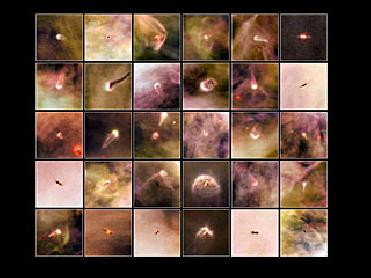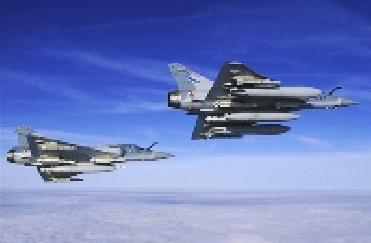
This atlas features 30 proplyds, or protoplanetary discs, that were recently discovered in the majestic Orion Nebula. Image Credit: NASA/ESA and L. Ricci (ESO).
PARIS (BNS): Hubble Space Telescope shown for the first time a collection of 30 beautiful images of embryonic planetary systems in the Orion Nebula. These planetary systems are also known as proplyds, or protoplanetary discs.
According to the scientists, such clear pictures of numerous spots, which are throwing light on the planet formation theory, were only possible by the NASA/ESA Hubble Space Telescope. They normally have advanced features such as high resolution and sensitivity needed for such detailed images.
Orion Nebula is one of the most photogenic objects in space. During the emergence of new born stars from Nebula's mixture of gas and dust, proplyds form around them. As a result, the centre of spinning disc heats up and becomes a new star.
Researchers have till date has discovered 42 protoplanetary discs using Hubble's Advanced Camera for Surveys (ACS).
Orion Nebula was first discovered by the French astronomer Nicolas-Claude Fabri de Peiresc in the 17th century. Nebula which is 1500 light years away is the closest star-forming region to the Earth.
The proplyd atlas containing such beautiful images is the first scientific outcome on the Orion Nebula. Such programmes generally allow the scientists to conduct comprehensive studies using Hubble Space Telescope.
 Previous Article
Previous Article Next Article
Next Article












The Indian Air Force, in its flight trials evaluation report submitted before the Defence Ministry l..
view articleAn insight into the Medium Multi-Role Combat Aircraft competition...
view articleSky enthusiasts can now spot the International Space Station (ISS) commanded by Indian-American astr..
view article